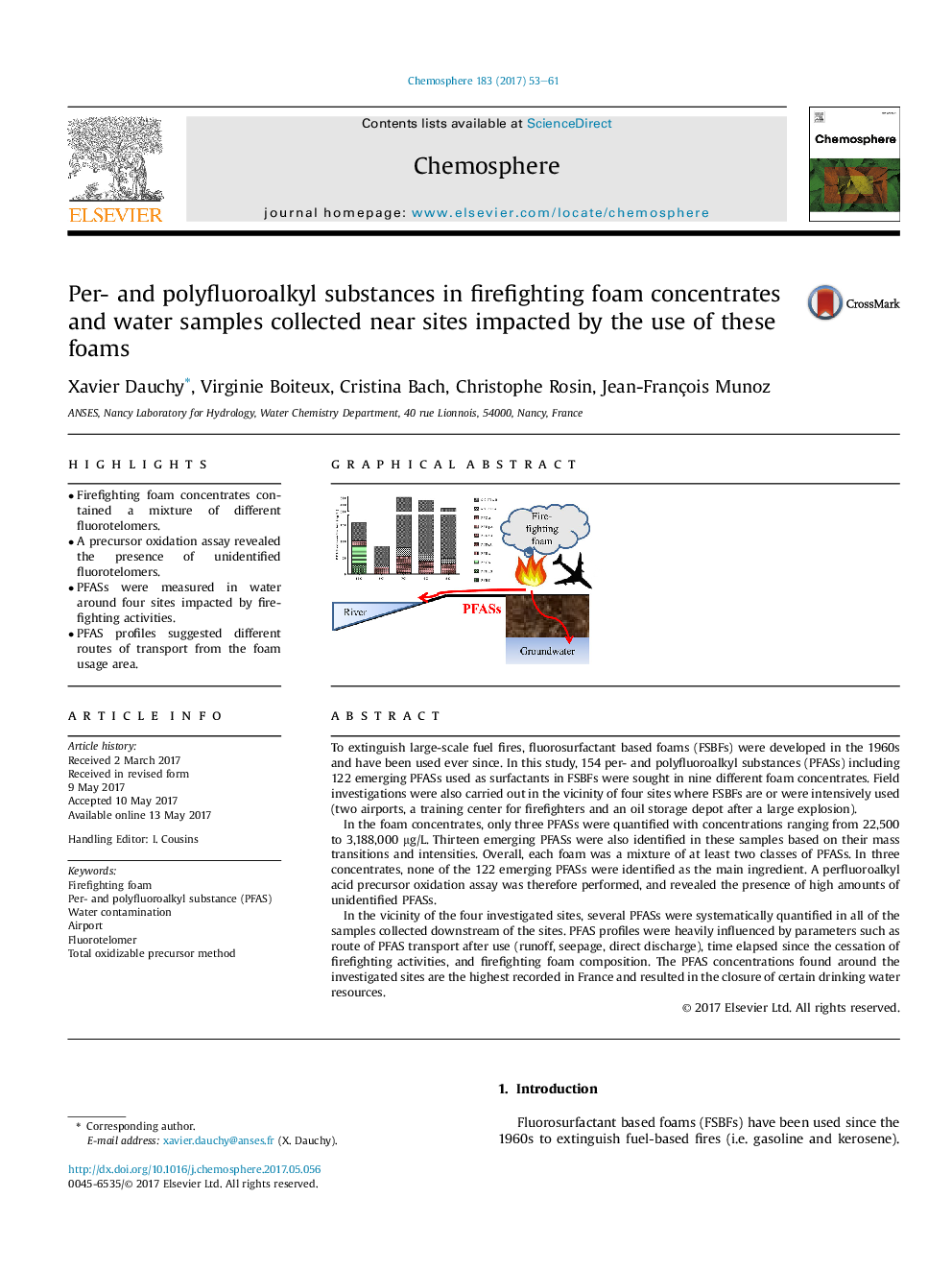| کد مقاله | کد نشریه | سال انتشار | مقاله انگلیسی | نسخه تمام متن |
|---|---|---|---|---|
| 5745940 | 1618788 | 2017 | 9 صفحه PDF | دانلود رایگان |
- Firefighting foam concentrates contained a mixture of different fluorotelomers.
- A precursor oxidation assay revealed the presence of unidentified fluorotelomers.
- PFASs were measured in water around four sites impacted by firefighting activities.
- PFAS profiles suggested different routes of transport from the foam usage area.
To extinguish large-scale fuel fires, fluorosurfactant based foams (FSBFs) were developed in the 1960s and have been used ever since. In this study, 154 per- and polyfluoroalkyl substances (PFASs) including 122 emerging PFASs used as surfactants in FSBFs were sought in nine different foam concentrates. Field investigations were also carried out in the vicinity of four sites where FSBFs are or were intensively used (two airports, a training center for firefighters and an oil storage depot after a large explosion).In the foam concentrates, only three PFASs were quantified with concentrations ranging from 22,500 to 3,188,000 μg/L. Thirteen emerging PFASs were also identified in these samples based on their mass transitions and intensities. Overall, each foam was a mixture of at least two classes of PFASs. In three concentrates, none of the 122 emerging PFASs were identified as the main ingredient. A perfluoroalkyl acid precursor oxidation assay was therefore performed, and revealed the presence of high amounts of unidentified PFASs.In the vicinity of the four investigated sites, several PFASs were systematically quantified in all of the samples collected downstream of the sites. PFAS profiles were heavily influenced by parameters such as route of PFAS transport after use (runoff, seepage, direct discharge), time elapsed since the cessation of firefighting activities, and firefighting foam composition. The PFAS concentrations found around the investigated sites are the highest recorded in France and resulted in the closure of certain drinking water resources.
283
Journal: Chemosphere - Volume 183, September 2017, Pages 53-61
